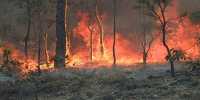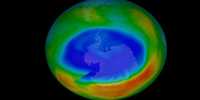At several points in our planet’s history, increasing carbon dioxide in the atmosphere has caused extreme global warming, which has rendered most of Earth’s species lifeless. In the past, these events were triggered by a massive volcanic eruption or asteroid impact. Now, the world is heading for another mass extinction – and blaming human activities. I am an Earth and Paleo-climate scientist and have studied the relationships between asteroid impacts, volcanoes, climate change, and species mass extinction.
My research proves that the current increased rates of carbon dioxide emissions have led to the extinction of dinosaurs and the previous two major extinctions. The world’s attention may now be focused on COVID-19. But the risks to nature from man-made global warming – and essential to making it work – are clear.
Past mass extinction: Many species can adapt to environmental changes as slow or even moderate. But Earth’s history shows that extreme migration to climate can lead to the extinction of many species. For example, an asteroid struck about 66 million years ago. Subsequently broken rocks and massive fires released large amounts of carbon dioxide for nearly 10,000 years. Global temperatures have risen further, sea levels have risen and the oceans have become acidic. About 80% of the species, including dinosaurs, were wiped out.
And about 55 million years ago, global temperatures rose again, for 100,000 years or more. The cause of this event, known as the Paleocene-Eocene thermal maximum, is not entirely clear. A theory known as the “methane burp” hypothesis states that a huge volcanic eruption suddenly released methane from the ocean floor, making the ocean more acidic and killing many species. So is life on earth now heading in the same direction?
Comparing greenhouse gas levels: Before industrial times began at the end of the 18th century, carbon dioxide in the atmosphere sat at around 300 parts per million. This means that for every one million molecules of gas in the atmosphere, 300 were carbon dioxide.In February of this year, atmospheric carbon dioxide reached 414.1 parts per million. Total greenhouse gas levels – combined with carbon dioxide, methane and nitrous oxide – reached 500 parts per million equivalents to carbon dioxide.
The next mass extinction has begun: The current atmospheric concentration of carbon dioxide is not yet at the level seen 55 million and 65 million years ago, but the huge flow of carbon dioxide means that the climate changes faster than many plant and animal species can adapt. A major UN report released last year threatened the extinction of about ten million species of animals and plants. Climate change was listed as one of the five main drivers.
Uncharted future climate territory: A study published in 2016 showed that the planet is being heavily influenced by humans. It states that the Earth naturally entered the next ice age in a period of about 20,000 years, the heat produced by carbon dioxide will create tropical summer conditions and delay the next ice age by about 50,000 years from now. During this time, chaotic high-energy storms will prevail in most parts of the world. My research suggests that humans may survive best in sub-polar regions and sheltered mountain valleys, where cold conditions can sustain flora and fauna.
Subsequent mass extinctions of the Earth can be avoided – if carbon dioxide emissions are dramatically prevented and we develop and deploy technologies to remove carbon dioxide from the atmosphere. But in the current trajectory, human activity threatens to depopulate large parts of the earth – a planetary tragedy of our own making.















